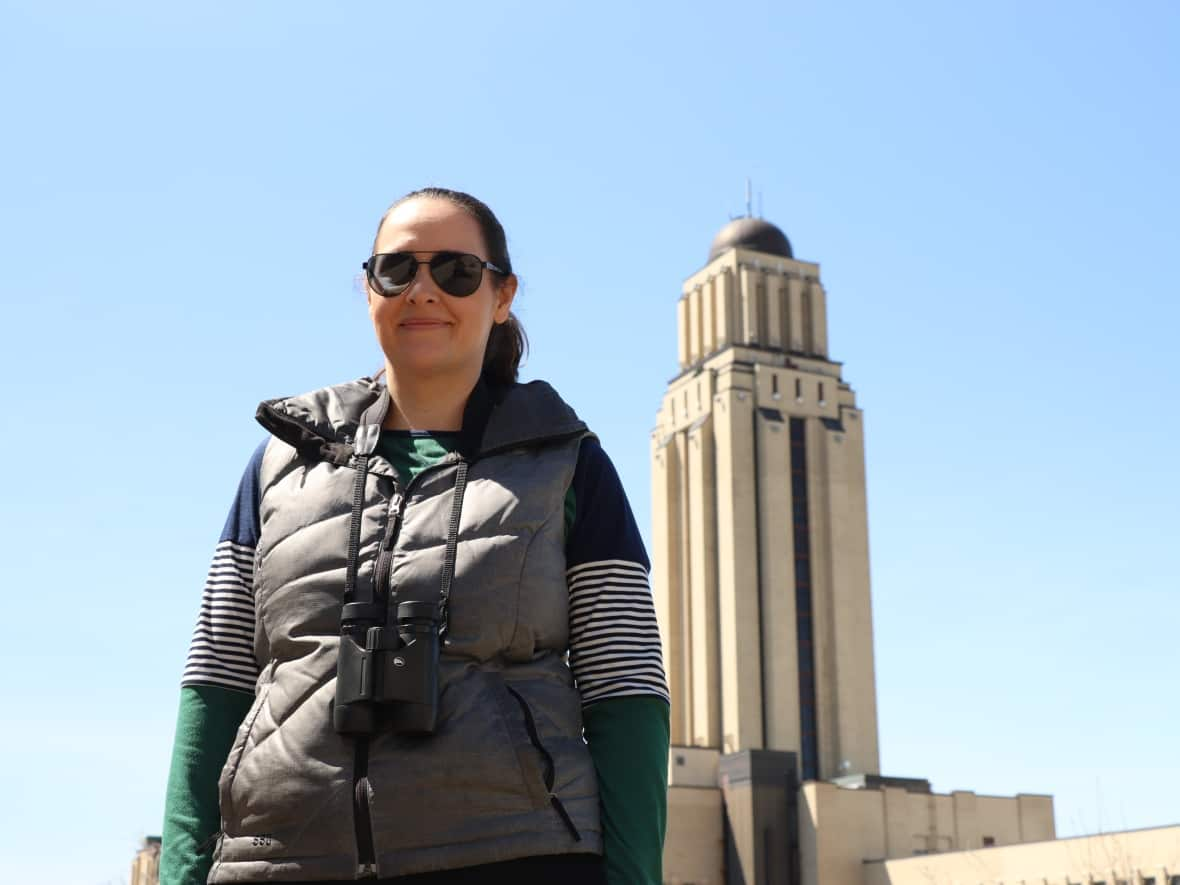Viewers can't get enough of this 24/7 falcon nest cam at Université de Montréal

It's not the most dramatic reality show out there, but it's certainly causing a flutter among some Montrealers.
Two peregrine falcons have taken up residence in a special nest box created for them high atop the Université de Montréal campus, and people have been keeping up with the critters day and night through a 24/7 livestream.
On any given day, dozens of viewers could be watching the day-to-day activities of the pair, known as Ève and M (short for Mister.)
For example, Ève can be observed incubating her four eggs overnight and M can be seen dropping off breakfast (often a pigeon) every morning.
Ève Bélisle, a research associate at Polytechnique Montréal and the person the female falcon is named after, is behind the project showing all the action taking place on the 23rd floor of the Roger-Gaudry pavilion tower.
"It all started about 15 years ago, when I discovered the falcons from my office window," she said. "I saw them flying around the tower and I looked it up and saw that, to be able to nest in a city environment, they need a nest box to be installed for them."
Bélisle convinced the university to install a nest box in 2008. The first babies hatched in 2009, which is when she installed a camera to keep an eye on them. From there, she created a YouTube channel with the livestream that has grown in popularity.

Thanks to Bélisle and other volunteers, several pairs of peregrine falcons have called the tower home over the years, garnering fans along the way.
"People are curious to see when the babies are gonna hatch and some people just find it very relaxing as well, just to have the camera on in the background, watching it while they work," Bélisle said.
"And there's always something happening with the falcons. It's like a soap opera, but it's real life!" she laughed.
There are now three high-definition cameras pointing at the nest, which broadcast a round-the-clock feed of the falcons.
And Bélisle is soon expecting viewership to soar as Ève's four baby chicks are poised to make their online debuts in just a matter of weeks.
Protecting the peregrines
David Bird, emeritus professor of wildlife biology at McGill University, has been involved with the protection of Montreal's peregrines since the 70s. He knows firsthand how far they've come from their troubling past.
The bird of prey, which is the fastest animal on earth, was listed as endangered in 1978 after a toxic pesticide, DDT, affected their ability to reproduce.
"In the east of Canada and in the U.S., there was literally none left. The birds were virtually extinct," he said.
Bird of prey biologists, including Bird, began breeding the animals in captivity to repopulate the species. Then, thanks to a historic pair of peregrines that took up residence for years on top of Montreal's Sun Life building downtown, experts got the idea to release them back into cities.
"Those skyscrapers in Montreal and many other cities around the world look just like cliffs to these birds, which they normally nest on," Bird said. He added that the abundance of food found in cities also makes nesting in these areas favourable.
He said there are currently roughly 10 to 15 pairs of peregrines nesting on different buildings and bridges in the Montreal area, each with the ability to dive at speeds of about 350 kilometres per hour to catch their prey.
Bird said the novelty of these creatures and their beauty are part of the reason why the public enjoys watching them online so much.
"People get to peak into the lives of these amazing creatures on a daily basis and watch them raise their young," he said.
Bird added efforts like the nest cam at the Université de Montréal also "[help] instill a love of nature for people living in cities that don't often get to see things like this."
He said the average person can help protect this population by scouting out prime locations, such as high ledges or building roofs, and having their own nest boxes or nest trays installed with gravel or a similar substrate.
"It's important that we continue to care about [peregrine falcons] and help them have successful breeding seasons in cities," he said.


